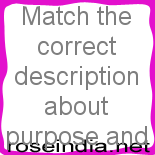The conversational state of a STATEFUL session object is defined as the session bean instance’s field values, plus the transitive closure of the objects from the instance’s fields reached by following Java object references.
STATELESS session beans are session beans whose instances have no conversational state. This means that all bean instances are equivalent when they are not involved in servicing a client-invoked method.
Because all instances of a STATELESS session bean are equivalent, the container can choose to delegate a client-invoked method to any available instance. This means, for example, that the Container may delegate the requests from the same client within the same transaction to different instances, and that the Container may interleave requests from multiple transactions to the same instance.
There is no fixed mapping between clients and STATELESS instances. The container simply delegates a client’s work to any available instance that is method-ready.
There is "method ready" STATE for STATEFUL session beans. Because they have relationship: one client - one bean.
There is "method ready" POOL for STATELESS session beans. Because they have relationship: one client - many beans.
